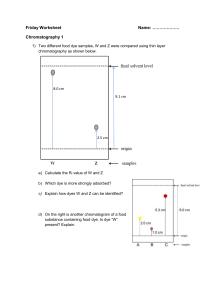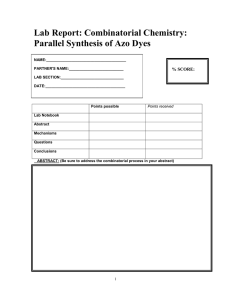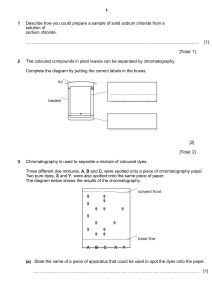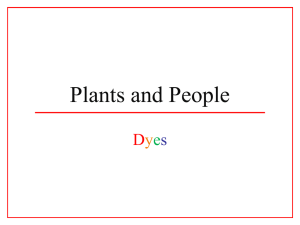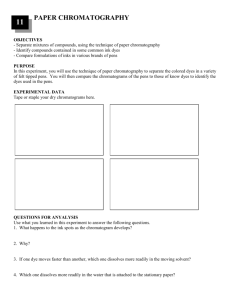Directions for Preparing Dye Solutions
advertisement
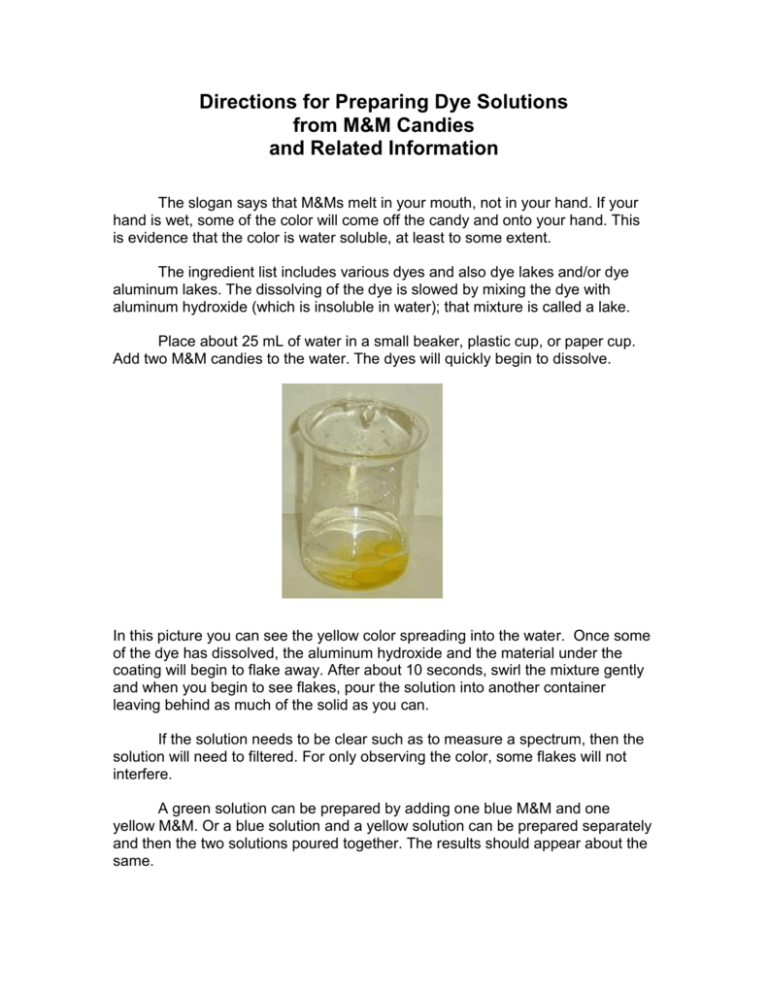
Directions for Preparing Dye Solutions from M&M Candies and Related Information The slogan says that M&Ms melt in your mouth, not in your hand. If your hand is wet, some of the color will come off the candy and onto your hand. This is evidence that the color is water soluble, at least to some extent. The ingredient list includes various dyes and also dye lakes and/or dye aluminum lakes. The dissolving of the dye is slowed by mixing the dye with aluminum hydroxide (which is insoluble in water); that mixture is called a lake. Place about 25 mL of water in a small beaker, plastic cup, or paper cup. Add two M&M candies to the water. The dyes will quickly begin to dissolve. In this picture you can see the yellow color spreading into the water. Once some of the dye has dissolved, the aluminum hydroxide and the material under the coating will begin to flake away. After about 10 seconds, swirl the mixture gently and when you begin to see flakes, pour the solution into another container leaving behind as much of the solid as you can. If the solution needs to be clear such as to measure a spectrum, then the solution will need to filtered. For only observing the color, some flakes will not interfere. A green solution can be prepared by adding one blue M&M and one yellow M&M. Or a blue solution and a yellow solution can be prepared separately and then the two solutions poured together. The results should appear about the same. A purple solution can be prepared in a similar way using red and blue M&Ms. Brown is not a primary color, yet there are brown M&Ms. The color must result from a mixture of two or more of the colors red, blue, yellow, and orange. Students might try to make a brown solution by trying various mixtures of colors. The visible spectrum of the brown solution from a brown M&M might give you some hints when compared with the visible spectra of the individual dyes. And again, it might not. This experiment could be speeded up if the students didn't have to dissolve a lot of M&Ms in order to get the colored solutions. A quantity of solutions of the various colors could be prepared in advance using dyes available in the grocery store in the baking sections (used for coloring frosting, Easter eggs, etc.).
